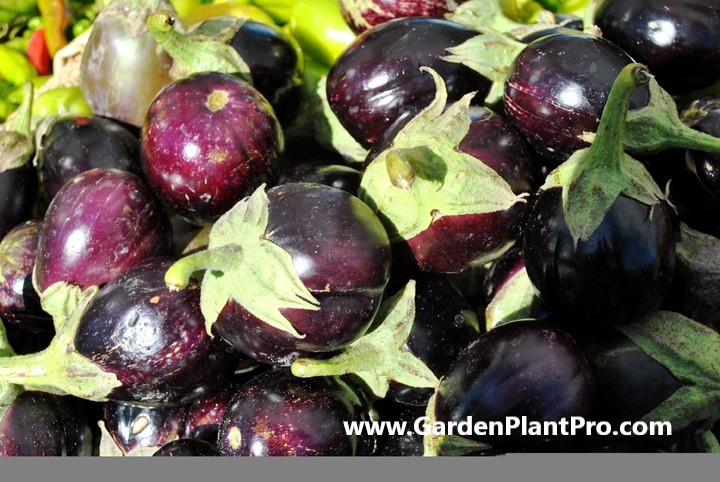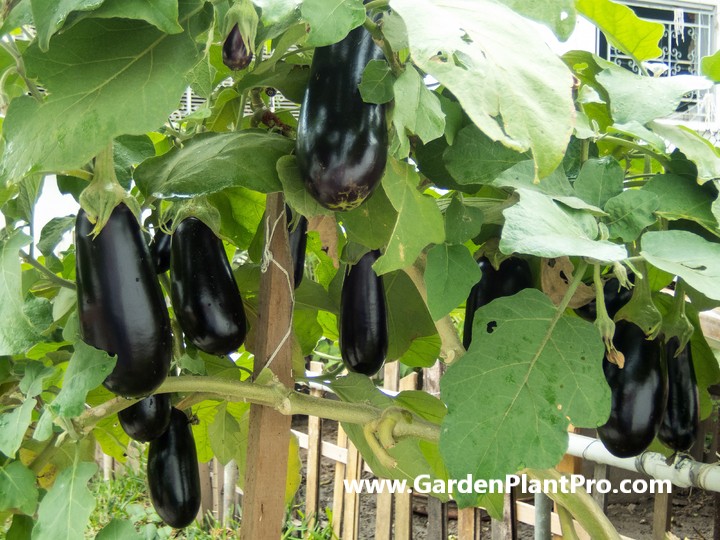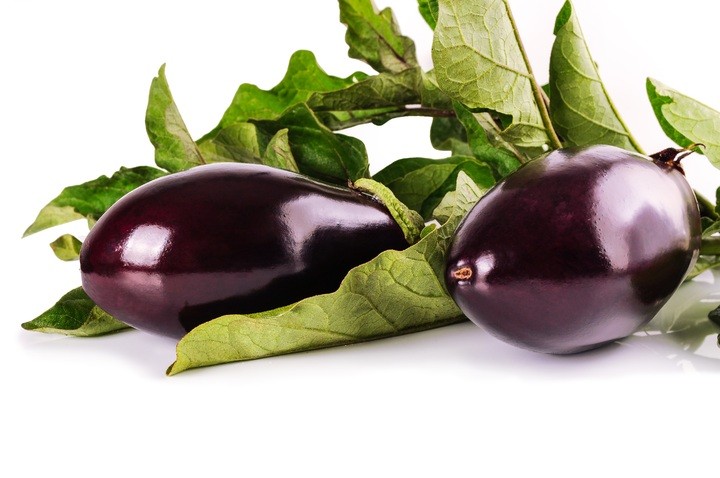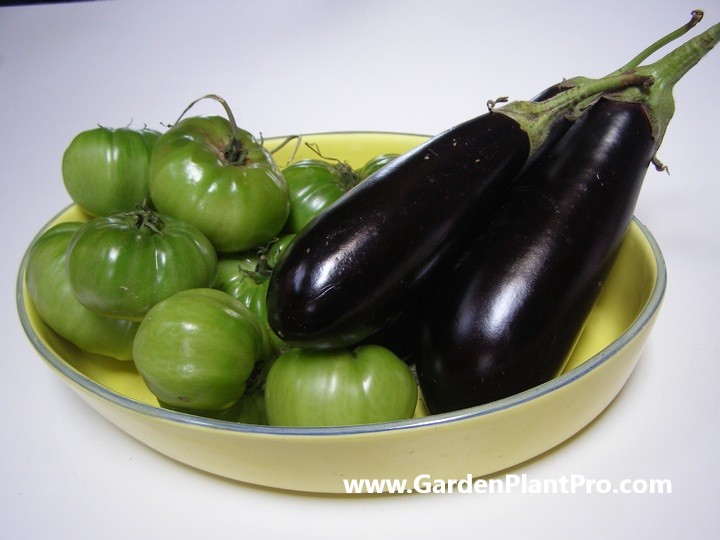Do you have a green thumb and love growing your own food? Eggplants (also known as aubergines) are an ideal choice for those who want to add some variety to their garden. In this guide, we’ll provide you with the tips and tricks needed to successfully grow eggplants in your own backyard. So, get ready to dig in!
A Brief History
Eggplants are a popular and versatile vegetable that have been enjoyed for centuries. Believed to have originated in India, eggplants were first cultivated as early as the 5th century BC. The fruit was then spread to other countries throughout Asia, Africa, and Europe.
The eggplant has come a long way since its early days, and today it is grown in gardens all over the world. Eggplants come in a wide variety of shapes, sizes, and colors including the classic purple eggplant and white varieties.
Eggplants have long been used as a health food due to their high nutritional value. In addition to containing healthy amounts of vitamins and minerals, they are a good source of dietary fiber and low in calories, making them an ideal addition to any diet.
Eggplants are also popular for their uses in cooking. They can be roasted, grilled, steamed, stir-fried or even made into soup. No matter how you choose to enjoy them, eggplants are sure to add flavor and nutrition to any meal.
Nutritional Benefits
Eggplants are a nutritious and low-calorie food that can provide many health benefits. They are a good source of dietary fiber, vitamin C, vitamin K, magnesium, potassium, and antioxidants. They provide essential minerals like iron, calcium, and phosphorus that are needed for optimal health. Eggplants are also rich in other vitamins and minerals such as folate, thiamin, riboflavin, niacin, and manganese.
Eating eggplant may help to reduce the risk of heart disease by lowering cholesterol levels and reducing inflammation. The antioxidants in eggplants have been linked to reducing the risk of certain types of cancer. Eating them may also help to reduce the risk of type 2 diabetes.
Eggplants can be eaten cooked or raw in salads or as part of a main dish. They can be grilled or baked for a healthy side dish or added to soups or stews for extra flavor. Eggplant parmesan is a popular dish that is high in vitamins and minerals as well as being low in calories and fat.
To get the most nutritional benefits from eggplant it is important to choose fresh ones with thick glossy skin that is free from blemishes. Store them in the refrigerator for up to five days and use them before they start to wilt or discolor. Before cooking, wash the eggplants thoroughly under cool running water and then slice or cube them as desired.

Common Varieties & Their Uses
When it comes to eggplants, there are a variety of shapes, sizes, and colors to choose from.
The most common varieties are the long, skinny Asian types, such as Ping Tung Long and Ichiban. These are usually dark purple in color and have a mild flavor. The plumper European varieties, such as Black Beauty and Rosa Bianca, are usually rounder with pale skin and a sweet flavor. There are also some white varieties, such as Dourga and Casper.
For best results, choose small-fruited eggplant varieties for a home garden. It is easier to grow small plants with smaller fruits compared to larger varieties with huge fruits. When growing eggplant in containers, stake the stems before the fruit appears to keep plants upright.
When To Sow
When it comes to sowing eggplants, timing is key.
Eggplants enjoy long hot summers and are frost-tender so planting should be done well after the chance of frost has passed. Depending on your climate this is likely to be around mid-spring when the weather is warm and temperatures are suitable for germination.
If growing from seed, it is recommended to soak the seeds in lukewarm water for 24 hours prior to sowing. To ensure successful germination, the soil temperature should be a minimum of 15C and preferably 25-30C.
Choosing A Suitable Location In The Garden
Having selected the ideal variety for your needs, it is now time to choose the perfect location in your garden for growing eggplants. Eggplants require full sun—at least 6 to 8 hours of direct sunlight per day—to flourish. A hot, sunny spot in the garden is best for eggplant growth.
The soil should also be well-drained and have a pH between 6.0 and 7.0. Rich, organic matter should be added to light soils before planting.
When planting eggplant seedlings, make sure that your transplants go in a spot in the garden where they will get full sun. It is best to wait until all risk of frost has passed and the soil has warmed to at least 15C before transplanting your seedlings into the garden.
Eggplant will also benefit from having its roots shaded during hot summer months. This can be achieved by planting taller crops nearby, such as tomatoes or pole beans, or by shading the soil with mulch or straw.
Preparing The Soil
Preparing the soil is an essential step for successful eggplant growth.
DIY PROJECT: Collect rainwater no matter where you live...
This DIY project is the best way to legally collect rainwater NO MATTER where you live. Get chlorine-free water, cut down on your water bills, and have enough for an emergency situation or to water your garden. Read More Here...
The best soil type for growing eggplants is a well-drained sandy loam or loam soil that is high in organic matter. To improve soil fertility, mix 1 inch of well-rotted manure, compost or other organic matter into the top 6-8 inches of soil before planting.
Eggplants cannot tolerate boggy soils, so it is important to ensure proper drainage. If drainage is poor, adding humus material to the bed will help improve it.
Additionally, have your soil tested and adjust pH to a more optimal level of 5.5 to 7.5 by adding lime or sulfur accordingly. Applying phosphorus (P) and potassium (K) should also be done according to soil test recommendations. Finally, practice crop rotation by changing the location of eggplants each year in order to prevent disease buildup in the soil. With proper preparation, eggplants can thrive in your garden for many years.
Planting The Seeds Or Seedlings
Planting the seeds or seedlings is the next step in growing eggplants in your garden. You can either start them indoors in small containers filled with a quality seed-starting mix, or directly plant them in the garden soil after the risk of the last spring frost has passed and daytime temperatures are above 20C. If you choose to sow the seeds indoors, add a ¼-inch (6 mm) layer of potting soil to flats or cell containers and then scatter the tiny seeds on top. Water lightly and cover with a thin layer of soil. Place in a sunny spot and keep moist.
When planting the seeds directly into your garden bed, wait until temperatures are consistently above 15C and there is no risk of frost. Fill the pot with a quality potting mix like Yates Premium Potting Mix and sow the tiny seeds about ¼-inch (6 mm) deep into the soil. For best results, you may also want to soak the seeds overnight before planting them in order to increase germination rate and speed up sprouting time.
Once planted, water well and keep moist. As your seedlings grow, thin out any over-crowded plants to give your eggplants enough space to thrive. Provide support for taller plants as necessary, such as by using stakes or cages for larger varieties. With proper care and attention, your eggplants will be ready for harvest within 50-90 days from sowing.
Caring For The Seedlings
Once the eggplant seedlings have been planted, it is important to care for them correctly. Eggplants need consistent watering and fertilizing to ensure good growth and development. Water the plants deeply once a week or when the soil starts to feel dry. A soaker hose or drip irrigation system is ideal for providing the correct amount of water.
About six weeks after planting, when the plants bloom and set their first fruits, they benefit from extra nutrients. You can side-dress the plants with a balanced fertilizer like Yates Thrive Natural Citrus & Fruit Pelletised Plant Food. Mulching around the base of the plants helps keep the soil moist and weeds down.
Pinch off any flowers that appear before midsummer as this will help encourage fruit growth later on in the season. Provide support for growing plants by staking them or using eggplant cages for larger varieties. Regularly inspect your plants for pests and disease and treat accordingly. With careful tending, your eggplants will be ready to harvest in no time!
Watering & Fertilizing
When it comes to watering and fertilizing your eggplant plants, consistency is key. Water plants deeply and regularly to ensure they are getting adequate moisture. A drip irrigation system is best for this as it prevents seedlings from drying out and keeps water off the foliage.
Fertilize every few weeks using a water-soluble plant food or composted manure. To improve soil fertility, mix 1 inch of well-rotted manure into the soil before planting. The ideal pH of the soil should be between 6.5 and 7.5 for optimal growth and health of eggplants. By providing adequate moisture and nutrients, you can ensure your eggplants will produce high-quality, flavorful fruits throughout the growing season.

Proving Support For Growing Plants
Once the eggplant seedlings have been planted and established, it is important to provide them with support. This can be done by setting 24-inch-high stakes 1 to 2 inches away from each plant or by using cages. Staking the plants keeps the fruit from coming into contact with the ground, which reduces the risk of rot and damage. It also encourages upright growth and provides better air circulation.
When using stakes, make sure to drive them into the ground at least 8 inches deep and then tie the plants to the stake with twine or strips of cloth. When using cages, make sure they are at least 24 inches tall, as eggplants can grow quite large. It is also important to ensure that the cage does not touch the foliage of the plant as this can cause damage.
In addition to providing support for plants, mulching around the root zone will help retain soil moisture, which is essential for healthy eggplant growth. Consistent soil moisture will also reduce stress on the plants, ensuring better yields.
When & How To Harvest
Harvesting eggplant is an important part of growing the vegetable in the home garden. Depending on the variety, eggplants can be harvested 65 to 80 days after transplanting. For plants started from seed, it may take up to 120 days before they are ready for harvest.
Harvesting should be done when the fruit is beginning to show its mature color; it should be glossy and firm. The fruits should have a thick flesh and the skin should be taut and shiny.
If possible, harvest eggplant with a sharp knife or pruning shears to avoid damaging the plant. Gently twist the fruit off the plant or cut it with a knife, leaving a short portion of stem attached to ensure that all of the plant’s nutrients are retained in the fruit.
Do you have some charcoal in your house right now? We call charcoal a “miracle leftover” for anyone who wants to be a little more self-sufficient and cut costs. That’s because it can help you with so many different things around the house and garden. You can even use it to make an energy-free fridge. Read More Here...
Be sure to check your plants regularly for any signs of disease or pests; if either is present, discard any affected fruits and dispose of them away from the garden. Harvest as soon as possible to prevent further spreading of disease or pests.
Harvesting eggplant at their peak will ensure you get the most delicious produce from your home garden. With proper care, you can enjoy this versatile vegetable throughout the season.
Storing
Storing eggplant is an important step for ensuring the quality of your harvest.
Eggplants should be stored in a cool, dry spot away from direct sunlight with a temperature of around 55°F (13°C). High humidity will help preserve the texture and flavor.
Eggplants can also be frozen for longer-term storage. To do this, cool and drain them before packing and leaving ½ inch headspace. Seal, label and freeze them for up to 8 months.
For maximum freshness and taste, use your eggplant within a few days of harvesting.

Common Diseases & How To Control Them
Eggplants are susceptible to several diseases, including blossom end rot, wilt diseases, and various fungal and bacterial issues.
Blossom End Rot
Blossom end rot is caused by a lack of calcium in the soil, and can be prevented by ensuring the soil is well-drained and fertilized with calcium-rich fertilizers.
Wilting
Wilting is usually caused by a lack of water or too much water, so proper watering techniques should be used. Watering at the base of the plant and allowing enough time for the plants to dry out during the day can help prevent wilting.
Fungal Diseases
Fungal diseases such as powdery mildew, downy mildew, and anthracnose can cause damage to eggplants. These can be prevented by avoiding overhead irrigation, and using fungicides such as Chlorothalonil or Ortho Garden Disease Control Hi-Yield Vegetable, Flower & Ornamental Fungicide.
Bacterial Diseases
Bacterial diseases such as bacterial wilt or bacterial spot can be difficult to control once they have appeared. To avoid these diseases, it’s important to follow good cultural practices such as crop rotation; using only disease-free seed; removing all diseased plants from the area; and using resistant varieties when available.
By following good cultural practices, providing adequate nutrition, and using appropriate pest and disease control measures, you can help ensure a successful eggplant crop.
Common Pests & How To Control Them
Common pests can ruin an eggplant garden if left unchecked. Flea beetles, aphids, and spider mites are all common predators of eggplant plants. To protect against these, it is important to monitor the plants regularly and take steps to prevent the pests from taking hold.
Flea Beetles
Flea beetles are tiny black bugs that feed on the leaves of eggplants. The best way to control them is to use a neem oil or insecticidal soap spray on the leaves of the plants. Make sure to spray in the evening when temperatures are cooler and the spray will stick better.
Aphids
Aphids feed on the soft stems and leaves of eggplants. They can be controlled by introducing beneficial insects such as ladybugs or lacewings into the garden. Another option is to spray a mixture of dish soap and water onto the leaves, which will suffocate them.
Spider Mites
Spider mites can cause yellow spots on the leaves and can be difficult to control as they like hot and dry conditions. Introducing beneficial insects such as predatory mites or ladybugs can help reduce their numbers in a garden, as can spraying plants with a mixture of water and liquid seaweed extract every few days.
To prevent pests in an eggplant garden, it is important to provide ideal growing conditions, such as fertile soil with a pH between 6.3 and 6.8 and regular watering. Maintaining healthy plants will help deter pests from infesting them, as well as providing habitats for beneficial insects that prey on pests like flea beetles, aphids, and spider mites.
CASE STUDY: We've been living off the grid for the last 40 years...
In all that time an electric wire has never been connected to our house. We haven’t gotten or paid an electricity bill in over 40 years, but we have all the electricity we want. We grow everything we need, here, in our small backyard. We also have a small medicinal garden for tough times. Read More Here...
Beneficial Companion Plants
When you’re growing eggplants in your garden, it’s important to consider the plants that will make good companions. Fragrant herbs such as mint, dill, oregano, and chives can help deter pests from your eggplants. Peppers, both sweet and hot, can also make good companion plants as they have the same growing needs and are susceptible to the same pests and diseases.
A number of other vegetables can be grown together with eggplants in order to benefit from their respective pest-deterring qualities. Nasturtiums, marigolds, petunias, mint, estragon, thyme, onions, garlic, lettuce, spinach, peppers, amaranth and peas are all known to make beneficial companions.
It’s important to carefully consider the space available in your garden before you begin planting companion plants with your eggplants. You should also keep in mind that many of these plants require different soil types or levels of sunlight.

Using In Cooking
Eggplants are a versatile vegetable that can be used in a variety of dishes. They have a slightly bitter taste and a spongy texture that makes them a great addition to both sweet and savory recipes.
One popular way to prepare eggplant is to slice it and grill or bake it until it is tender. This can be served as a side dish or added to sandwiches and salads for extra flavor and texture. Another popular method is to bread and fry slices of eggplant to make eggplant parmesan or eggplant fries.
Eggplant is also a common ingredient in many Mediterranean and Middle Eastern dishes. In Baba Ghanoush, for example, the eggplant is roasted and then mashed with tahini, garlic, and lemon juice to create a creamy dip. In Ratatouille, a classic French stew, eggplant is combined with tomatoes, bell peppers, and zucchini to create a hearty and flavorful dish.




